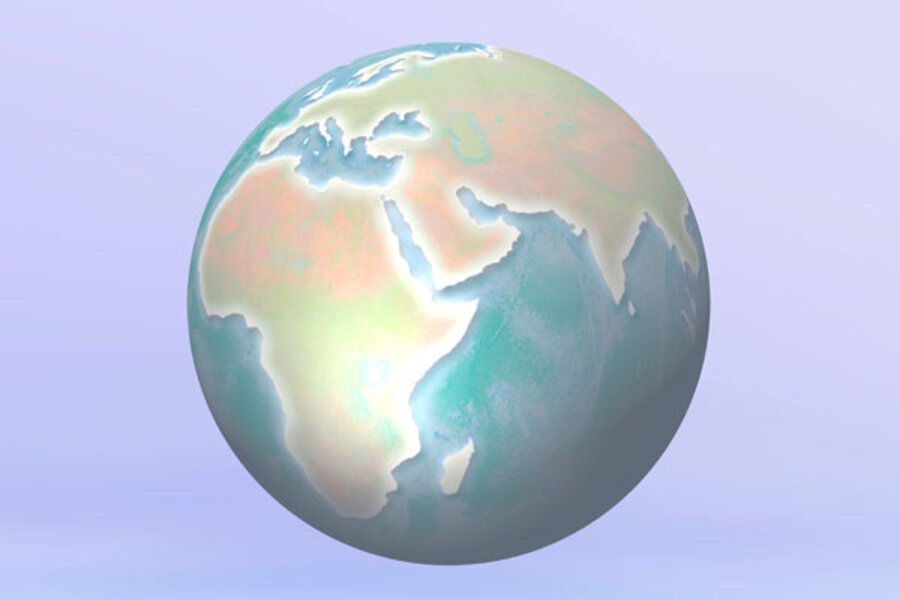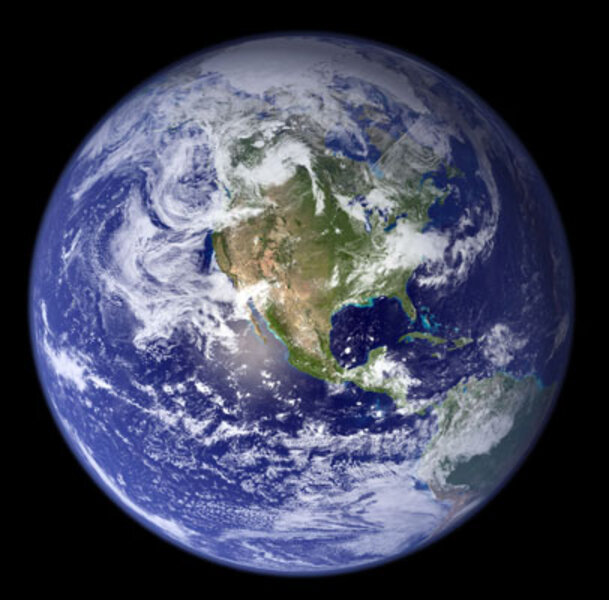The Medea Hypothesis: A response to the Gaia hypothesis
Loading...
In ancient Greek mythology, Gaia is the earth-mother goddess, the deity that gives life to all others. During the 1960s, British scientist James Lovelock first formulated the Gaia hypothesis, the idea that every living thing on Earth worked in concert to keep conditions at a certain equilibrium, or homeostasis, that was optimum for life.
In other words, organic life was geoengineering, although that geoengineering was unconscious.
One example of this principle: Scientists think life has existed on Earth, a planet that's just over 4.5 billion years old, for some 3.7 billion years. During that time, the sun has grown 30 percent brighter and yet, temperatures have remained relatively stable and within a relatively narrow margin that allows water to exist in liquid form, which is critical to life on Earth.
How have these temperatures been maintained in the face of an ever-stronger Sun? One explanation: Young Earth had more greenhouse gases., but as the sun grew stronger, the amount of these heat-trapping gases in the atmosphere shrank.
That's because life, which is carbon-based, sucked them out of the atmosphere and sequestered them. The end result was a cooling tendency that perfectly balanced out the sun's growing power, canceling out what would have been a runaway warming.
Initially the source of much controversy, the Gaia hypothesis, which Lovelock and others now consider a theory — one step above hypothesis on the "it's-been-proven-scale" — has been extremely influential in earth sciences such as ecology, to say nothing of popular culture.
In the popular imagination, Gaia – the all-nurturing, all-caring mother (earth) goddess – has become something of a cliché in her own right.
But now, Peter Ward, a noted paleontologist at the University of Washington, Seattle, has put forth a compelling counter-hypothesis with an equally prestigious-sounding Greek appellation.
It's called the Medea hypothesis, and the subtitle to Dr. Ward's eponymous new book sums it up: "Is Life on Earth Ultimately Self-Destructive?"
Ward's answer to this question is, as you might guess – yes, that by its very nature, life on Earth will ultimately lead to a premature end to conditions favorable to life on Earth.
In some versions of an ancient Greek myth, Medea, wife of the Argonaut Jason, in a big contrast to mothering Gaia, kills their children out of revenge for Jason becoming enamored of someone else.
Ward's argument, which is antithetical to the Gaia hypothesis: Life will cause its own end long before our sun, which will start expanding into a red giant in about 1 billion years, begins baking the biosphere away.
Most of the book is a systematic and fascinating dismantling of the assumptions underlying Gaia hypothesis. First are Earth's five mass extinctions. Microbes, Ward says, are implicated in all but one of these die-offs, the K-T extinction thought to have been initiated by a meteor strike 65 million years ago.
The broader point: Repeatedly throughout Earth's history, organic life, in the form of anaerobic microbes that normally inhabit oxygen-starved nooks and crannies, have emerged to extinguish life. These microbes exhale hydrogen sulfide, a gas poisonous to other life forms.
The instigator in this process is often oxygen-starved seas. Stagnant, low-oxygen seas are often preceded by rapid atmospheric warming. The tipping point is 1,000 parts per million of carbon dioxide, he says.
(We've written about the end-Permian extinction 251 million years ago, the greatest of all extinctions, and one thought to have occurred in precisely this manner.)
But, this warning aside, Ward's book isn't really about human-caused global warming. It's about the long-term future of life on the planet.
Organic life has repeatedly caused the collapse of the biosphere, and on at least one occasion (snowball earth) has almost extinguished it entirely.
Consider the advent of photosynthesizing organisms more than 3 billion years ago. Oxygen, a byproduct of photosynthesis, was deadly to the other organisms living at the time. As it accumulated, it killed — another mass extinction. (Of course, atmospheric oxygen also allowed for the emergence of multicellular life and, eventually, humans.)
The major long-term problem facing life on Earth is not, Ward says, global warming, but the gradual drawdown of carbon from the atmosphere by photosynthetic organisms.
Depletion of carbon dioxide has, in the past, caused dramatic global cooling. Twice before — once 2.3 billion years ago and again 700 million years ago — photosynthetic organisms used up such a large quantity of greenhouse gases that Earth froze over — what's called "snowball earth" — nearly ending life on the third rock from the sun.
In the future, Ward says, life's hunger for carbon will inevitably lead to a paucity of what's a fundamental building block of life, adding that this is the single greatest challenge facing life on this planet.
With graphs, he illustrates the long-term decline of atmospheric carbon dioxide over the past 3.5 billion years.
In the beginning, CO2 levels were perhaps 10,000 times higher than today's. The atmosphere was maybe one-third CO2. The subsequent trend is one of decreasing CO2 until, just before humans came along, CO2 had dropped to 280 parts per million. (Now, due to human activity, it has risen to 387 ppm.)
If carbon levels fell below 10 ppm, photosynthesis would become impossible for grasses, the most efficient carbon dioxide-utilizers around. (Trees can't handle anything less than 150 ppm.) The food chain will then collapse.
Ward forecasts that, given the aforementioned trends, carbon depletion beyond this critical threshold could happen as soon as 500 million years from now, about 500 million years sooner than the enlarging sun would begin to vaporize the oceans and make Earth uninhabitable anyway.
Then he drops a doozy:
In terms of biomass — the pure weight of all things living — our planet is already past its prime anyway. From here on out, quite independent of human activity — which isn't helping, of course — there's going to be less and less life. We're on the down slope. We're on a planet already in its old age.
Before anyone gets too anxious, Ward's dates need some perspective. While it's true that life has been around quite along time, it's also true that multicellular life – from trees to jellyfish to dinosasurs and people – has been around a small portion of that, since just before the so-called Cambrian explosion about 530 million years ago.
In other words, multicellular animal life evolved in the ocean, colonized land, and become us in roughly the same amount of time that we've got left.
More perspective: The primate lineage — monkeys, apes, gibbons and lemurs — stretches back 55 to 58 million years ago, about one-ninth of what we've got left, according to his hypothesis.
Even more perspective: The most recent common ancestor of all great apes — gorillas, chimpanzees, orangutans, and us — lived 14 million year ago, one-36th of what he says remains. And the common ancestor of humans and chimpanzees, our closest existing relative, lived just over 6 million years ago, an 83rd of the time left.
Further perspective: Modern humans have existed some 200,000 years. Multiply that by 2,500 and that's what we've got left, according to Ward.
In other words, we've got some time.
And yet, it's understandable that some readers find Ward's argument depressing. At Amazon.com, one reader calls "The Medea Hypothesis" "A Dark Book for Eggheads About Biocide." The book is "Dark, Difficult, and somewhat depressing," writes another.
But Ward's purpose in writing "The Medea Hypothesis" doesn't seem to be to elicit despair.
Indeed, although it's not apparent throughout much of the book — it would have been nice had he balanced his exploration of the past with one of the future — Ward seems to be arguing in an oblique way that Homo sapiens, with our capacity to plan in advance, are not just our own best hope, but the only hope for all of life on Earth.
He's trying to emphasize the importance of our arrival on the scene not just to ourselves, which is obvious, but to the entire biosphere. In the long run — and we're talking in the very long run here — only human ingenuity will save life from a planet that's always had an expiration date anyway.
Toward the end of the book, Ward says, "There is some dark irony in what must be done. In the near term we must reduce atmospheric CO2. Then, in the long term, we must move to keep CO2 from falling too far. But with significant engineering, both are readily possible."
And so Ward brings us full circle. Life is Medean, he's argued for 140 pages, not Gaian. By its very nature, it's self-destructive. The only hope in the very long run is through human foresight and planning, to ensure continued survival.
Then, he implies, life on Earth life will have finally overcome its Medean nature. It will have become truely Gaian.






